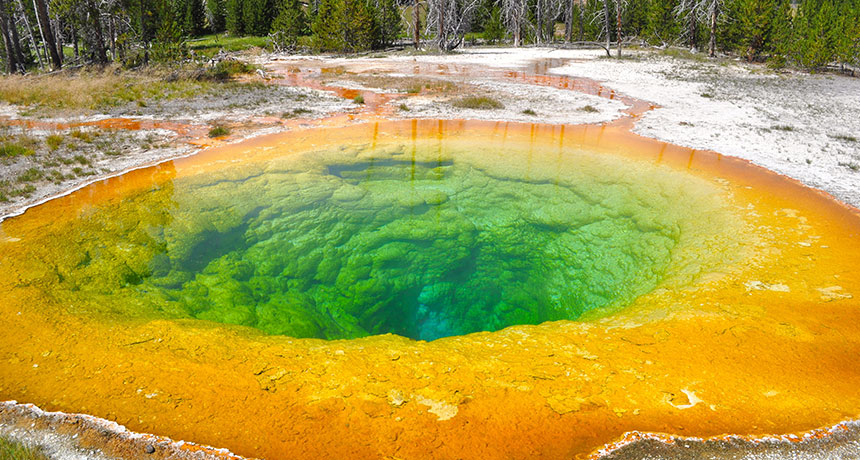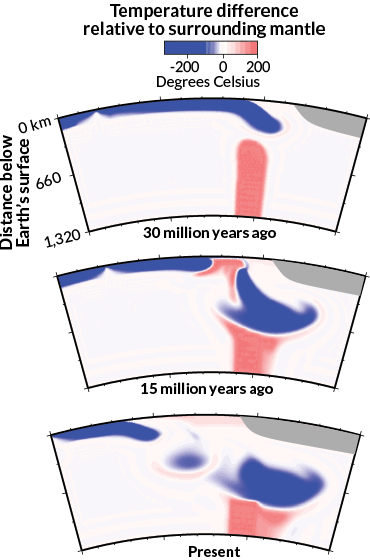
SUPERVOLCANIC ORIGINS A rising plume of hot rock from Earth’s mantle isn’t fueling the Yellowstone supervolcano and its natural wonders (Morning Glory hot spring, shown), new research suggests.
Julie Falk/Flickr (CC BY-NC 2.0)
The supervolcano lurking under Yellowstone National Park may not have resulted from a rising plume of hot rock from the planet’s depths as previously suggested.
New simulations of North America’s underside reveal that the mantle plume blamed for powering the Yellowstone supervolcano is in fact cut off from the surface by the remnants of a lost tectonic plate. That plate keeps a lid on the plume and has prevented its heat from playing a significant role in the region’s long history of massive eruptions, geoscientists report in a paper to be published in Geophysical Research Letters.
That means scientists need a new explanation for Yellowstone’s origins, says study author Lijun Liu, a geodynamicist at the University of Illinois at Urbana-Champaign. “For Yellowstone, the plume is not a big deal at all,” he says.
Over the last 16.5 million years, the hot spot under Yellowstone has fueled a string of supervolcanic eruptions. The most recent eruption around 640,000 years ago spewed enough debris to fill Lake Erie two times (SN: 10/4/14, p. 32). But long before that — around 200 million years ago — the converging Pacific and North American plates began forcing a slab of ocean crust called the Farallon Plate underground. Previous explanations of Yellowstone’s origins ignored this sunken plate, Liu says.
Simulating both the plume and the Farallon Plate together, Liu and geophysicist Tiffany Leonard retraced North America’s underground history. The work showed that some hot rock squirted through a crack in the plate around 15 million years ago, fueling a volcanic eruption. After that event, though, the relatively cool plate largely barred the plume’s heat from rising above a depth of about 300 kilometers and fueling any of the future eruptions.
The result demonstrates that the ancient tectonic slab is the dominant player beneath North America, says Eugene Humphreys, a geophysicist at the University of Oregon in Eugene who was not involved with the work. “The plume is really at the whim of the slab,” Humphreys says.
An alternative origin story for Yellowstone could come from geologic forces closer to the surface such as the churning of rocky layers, Liu says, though more work is needed.







